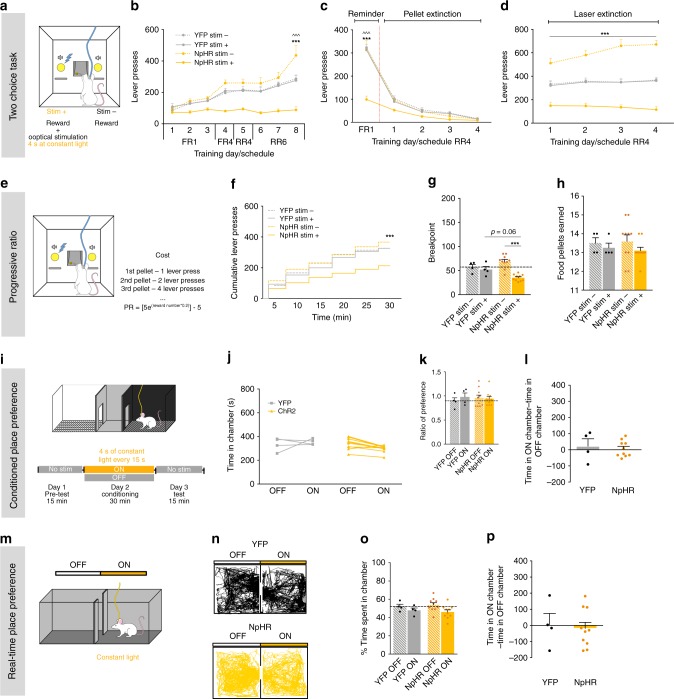Fig. 3.
LDT-NAc optical inhibition decreases preference and motivation. a Schematic representation of the two-choice task. Pressing stim- lever yields one food pellet and pressing stim+ lever delivers a pellet + optical inhibition of LDT-NAc inputs (4s at constant light). b Time-course representation of the responses in NpHR (n = 10) and YFP (n = 4) rats. Optogenetic inhibition of LDT-NAc terminals shifts preference for the non-stimulated lever (stim-) in NpHR animals, but no preference is observed in YFP group. c In pellet extinction conditions, both groups decrease responses for both levers. d In laser extinction conditions, pressing either lever originates the delivery of a pellet, and stim+ no longer yields laser stimulation. NpHR animals still prefer stim- lever; YFP animals do not manifest preference. e Progressive ratio task. f Cumulative presses performed during the progressive ratio task show that NpHR animals press less on stim+ lever. g Decrease in breakpoint for stim+ lever in NpHR animals. h Number of food pellets earned during progressive ratio sessions. i CPP and m RTPP paradigms, in which one chamber is associated with NpHR-mediated inhibition of LDT-NAc projections (ON side). j Total time spent in the OFF and ON sides. k Ratio of preference after CPP conditioning and l time difference on the ON and OFF sides, showing no preference/avoidance in any of the groups. n Representative tracks for an NpHR and a YFP animal during RTPP. o Percentage and p difference of time spent on the ON and OFF sides, showing no difference between groups. Values are shown as mean ± s.e.m. *refers to difference between NpHR stim+ and stim- levers, RM 2way ANOVA; ^refers to difference between NpHR stim+ and YFP stim+ levers, RM 2way ANOVA. *p < 0.05; **p < 0.01; ***p < 0.001

